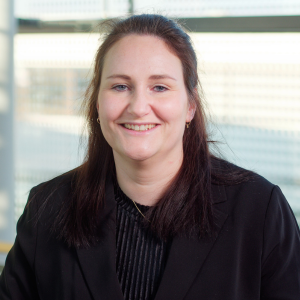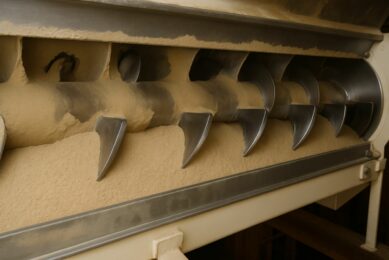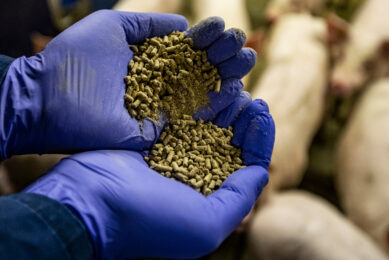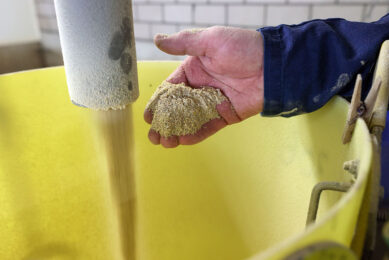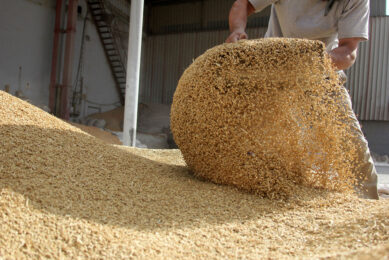Feed Design Lab: Course on feed processing
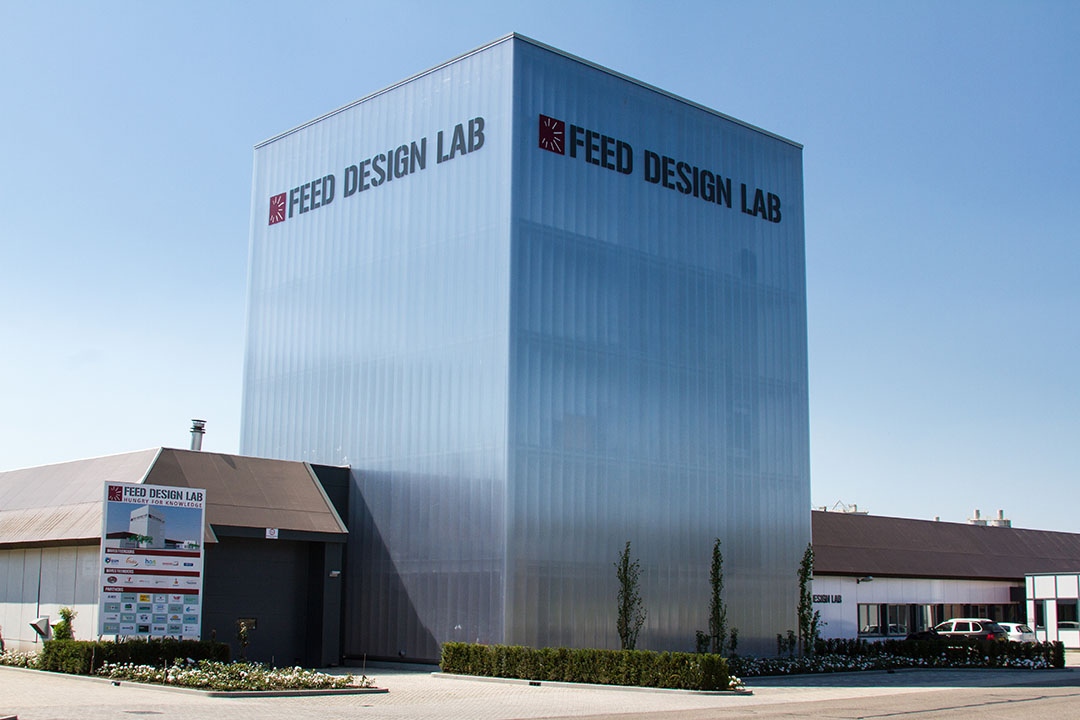
All About Feed recently participated in a feed processing course run by Feed Design Lab, a practical research and education centre in the Netherlands.
Feed design lab (FDL) is located in a distinctive modern building that you can’t miss. Inside awaits a warm welcome for all participants of the 2-day course ‘Basis processes in compound-feed production’.
Director of Feed design lab Trudy van Megen and process technologist Eric Vissers ensure everyone is provided with coffee and a ‘limburgse vlaai’, a typical regional cake. After a brief introduction it’s time to dive into the process of making feed. The course, guided by Eric Vissers, is interactive and starts off with a group assignment, in which pictures of the feed process must be placed in the right order. The participants appear to be well informed and the puzzle is solved rather quickly. Next there was a tour of the feed factory, providing an overview of the entire production process. “In our factory all processing machines can be opened and can be viewed from within. That is quite unique in comparison to a tour of an operating feedmill,” Eric Vissers explains.
In the Netherlands we have long served as an example for the countries around us.” – Trudy van Megen, FDL Director.
Theoretical part
Day 1 – isall about grinding and mixing. After the factory tour, it is time for the theoretical part, covering the whole process starting with the arrival, storage and dosing of raw materials. After accurately weighing and dosing the raw materials, it’s time for grinding. Grinding is a 50-year-old procedure, with several benefits, Vissers explains. “Grinding the materials positively influences the homogeneity and digestibility of the feed by the animal. There are a number of machines on the market that are used for grinding, such as the roll and hammer mill.” In the course every machine is discussed in detail, providing a good understanding of each application. This also applies to the mixing machine and the difference between peddle and ribbon mixers.
Day 2 – continues with a class on the next steps to take when processing feed. From conditioning the feed to pelleting, it’s all covered and clearly explained. Regarding the conditioning of the feed there is still room for improvement, according to Vissers. “Nowadays, when conditioning the feed, hot steam is used, mainly to destroy bacteria like Salmonella. Unfortunately, this process also affects the enzymes, which are difficult to maintain under these conditions. That’s why enzymes are usually high dosed, and this is clearly not sustainable. At Feed Design Lab we’re starting a project to optimise this process.”
Processing your own feed
Besides the theoretical part, the course consists of a rather fun practical part, which involves processing your own animal feed. On the
Day 1 – participants are divided into 2 groups, one making cat feed and the other poultry feed. Soon everyone is busy searching for raw materials. Bags are dragged around and materials are weighed. When all materials are dosed correctly, the time has come to try out the machines, starting with the hammer mill and choosing the right feed sieve. This is followed by the mixer, in which the liquid materials are added. When Eric Vissers opens the machine, everyone looks, full of curiosity, at the substance formed in the mixer.
Day 2 – this substance will be transformed in animal feed. Vissers: “Pelleting is one of the things we excel in in the Netherlands; 90% of the animal feed produced is pelleted. The challenge is to stay innovative, which is why we needed an independent location for feed research trials.”

“FDL is like an enzyme”
The feed design lab opened its doors in 2014 and has recently celebrated its 5-year anniversary. Director Trudy van Megen is proud of the fact that the number of partner companies has grown from 24 at the time of opening to 108 today: “Cooperation is essential to face the challenges we’re confronted with in the feed industry. We aim to start more joint projects; however, collaboration is still difficult. Our role at FDL is to connect the partner companies and facilitate projects.”
Visser adds: “FDL is like an enzyme, a catalyst, speeding up the process, without itself being altered.” FDL organises several activities for the partner companies, such as workshops, business trips, and innovation and knowledge sessions. In addition, companies have the opportunity to use the test plant for a joint project or with complete secrecy. It is mainly the additive companies that use the test plant, whereas compound feed companies have their own R&D facilities. Another important activity is providing training programmes. “We have a lot of visitors from abroad, for whom we provide a tailor-made programme, with a theoretical and practical part, Director Trudy van Megen explains. “In the Netherlands we have long served as an example for the countries around us. However, nowadays we are extremely focused on producing efficiently and cheaply, rather than being innovative. This is why we develop innovative projects that contribute to the goal of achieving a sustainable animal protein chain.” All About Feed participated in an open-registration training programme. As FDL provides basic and advanced courses on feed processing, both new and experienced employees can participate in these open-registration training programmes.
Feed Design labFeed Design Lab is a research and education centre in the animal feed sector, based in the Netherlands. Feed Design Lab has 3 primary activities:
FDL has a network consisting of more than 100 partner companies from the feed industry, who participate in different types of projects. Partners use the test plant for feed testing’s or demonstrations. In addition partners participate in innovative projects that contribute to a sustainable animal protein chain. |


